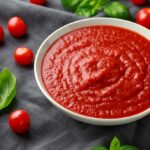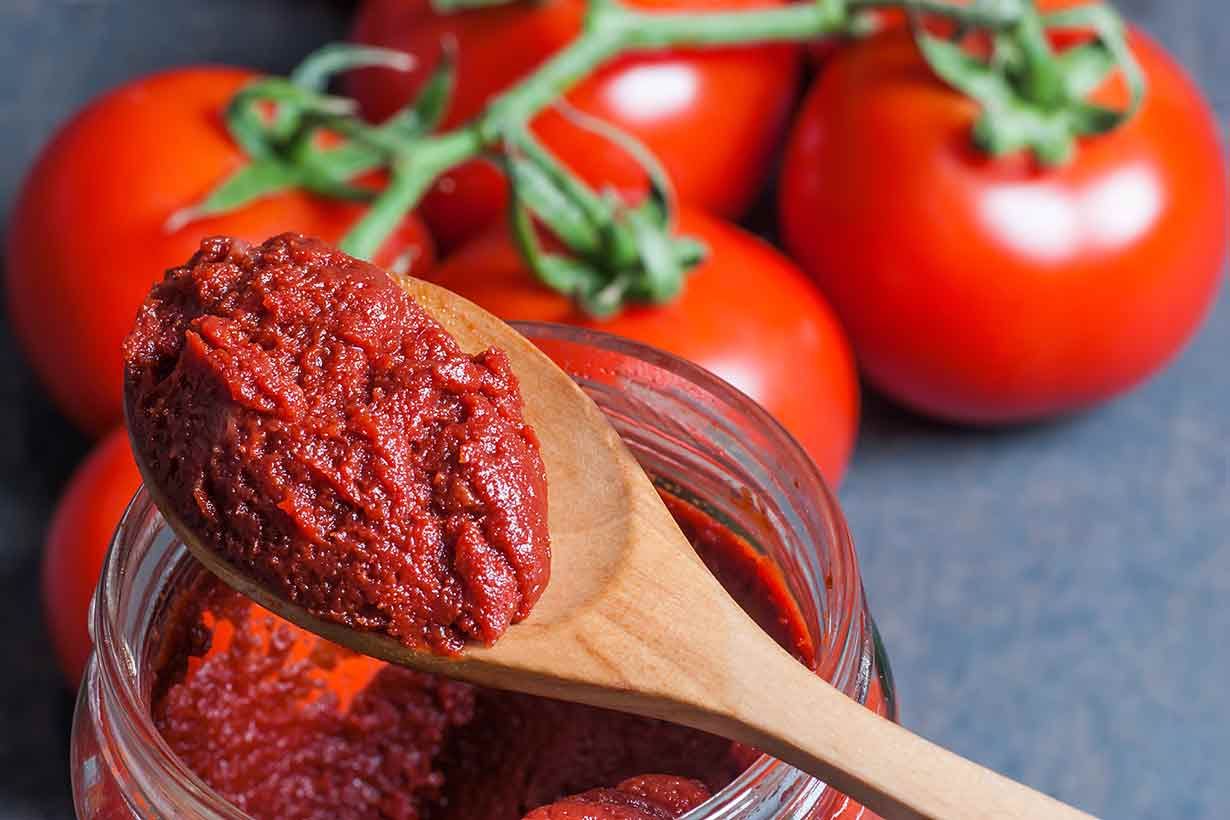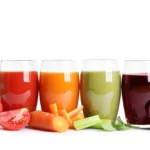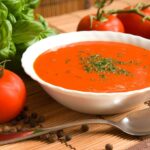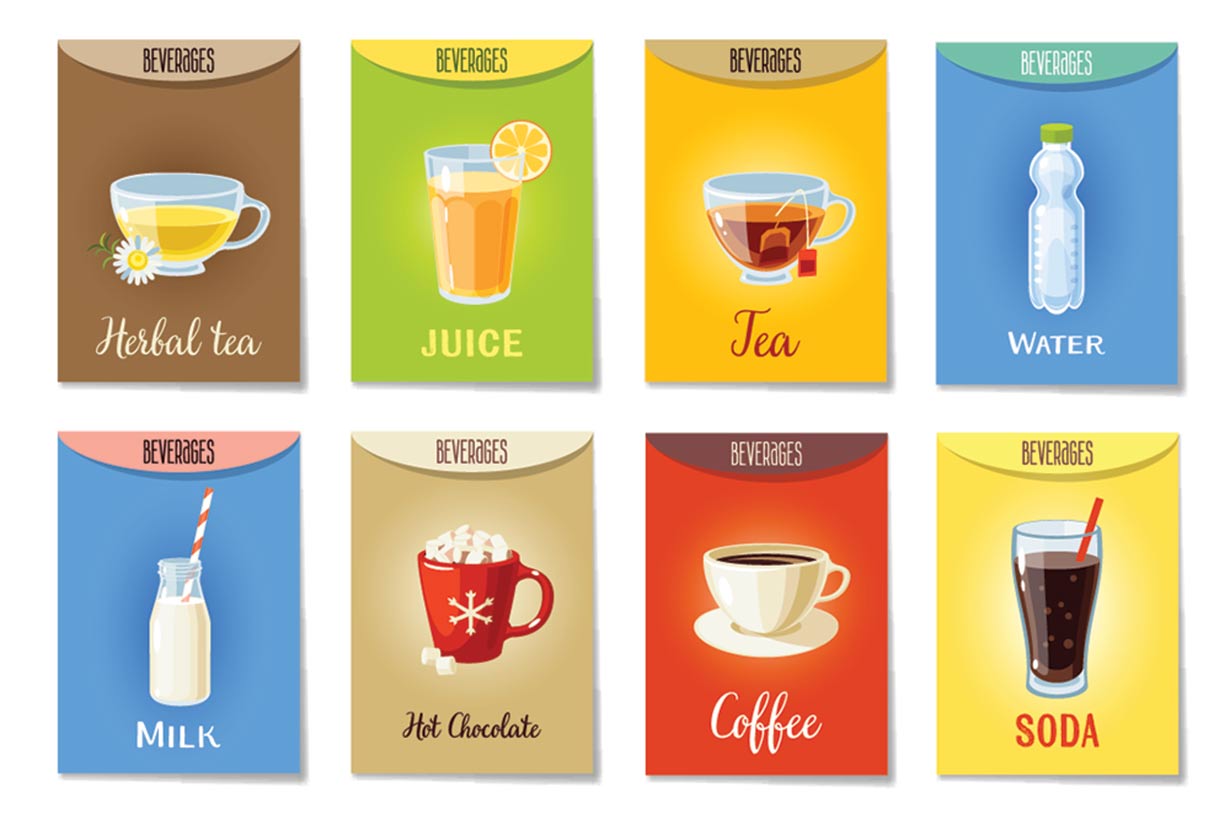Tomato juice is a nutrient-rich vegetable juice.
This article provides a guide to the health benefits of tomato juice, including its nutritional values, recent scientific research, potential downsides, and some common questions people have about it.
Table of contents
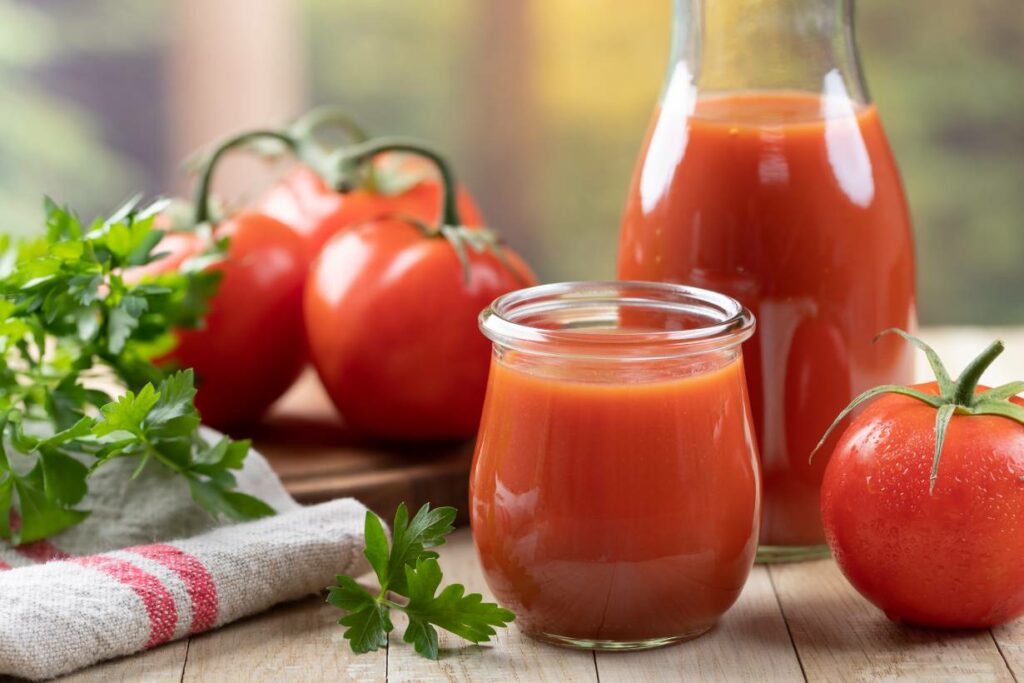
Nutritional Benefits
Here are some of the main nutritional benefits that tomato juice offers.
One of the Best Sources of Lycopene
Tomatoes are the best dietary source of lycopene. Lycopene is a type of carotenoid, a red pigment that gives tomatoes their characteristic color (1, 2).
It also has some potential health benefits, such as anti-inflammatory effects and a reduced risk of cardiovascular disease, metabolic syndrome, mortality, and stroke (3, 4, 5, 6).
Lycopene is more bioavailable in tomato juice than in whole tomatoes. This is because the juicing process breaks down the cell walls of the tomatoes, making the lycopene easier to absorb (8, 9).
Tomato products like tomato paste and tomato passata also offer more easily absorbed lycopene compared to whole tomatoes.
Lycopene is fat-soluble, so consuming tomato juice alongside a source of fat will help to increase the absorption rate (9).
According to the USDA FoodData Central database, a 248-gram glass of tomato juice contains 22,400 micrograms (mcg) of lycopene (10). For comparison, a 123-gram medium tomato provides 3,160 mcg of lycopene (11). In other words, a glass of tomato juice provides the same amount of lycopene as approximately seven medium tomatoes.
High In Vitamin C
Tomato juice is a good source of vitamin C, providing 124 milligrams (mg) in a 248-gram glass. This is equivalent to 138% of the daily value (% DV) for adults (10, 12).
Vitamin C is an essential vitamin with antioxidant properties, meaning it can help protect cells from damage caused by free radicals. Free radicals are unstable molecules that are produced as a byproduct of normal metabolism (13, 14).
Vitamin C also plays an important role in supporting the immune system (15).
Provides a Good Amount of Potassium
Tomato juice is a good source of potassium, boasting 491 mg in a 248-gram glass. This is equivalent to over 10% of the daily value (10, 12).
Potassium is an important mineral that helps regulate fluid balance and blood pressure. Higher intakes of potassium can help to lower blood pressure, while higher sodium consumption can raise it (16, 17).
Most people do not get enough potassium in their diet. Conversely, the average sodium intake is higher than recommended levels (18, 19).
This is why potassium is viewed as one of the ‘dietary components of public health concern for the general U.S. population’ by the Dietary Guidelines for Americans 2020-2025 (20).
Provides More Fiber Than Other Juice Options
Tomato juice is a relatively good source of fiber compared to other juices. A 248-gram glass of tomato juice contains 0.99 grams (10).
The table below shows the comparative calorie, carbohydrate, and fiber content of a glass of tomato juice compared to several popular juice varieties (10, 21, 22, 23):
| Juice | Calories | Carbohydrates | Fiber |
|---|---|---|---|
| Tomato juice | 57 kcal | 10.7 g | 0.99 g |
| Orange juice | 117 kcal | 25.3 g | 0.74 g |
| Apple juice | 119 kcal | 28.0 g | 0.50 g |
| Cranberry juice | 79 kcal | 18.0 g | 0.25 g |
As the table shows, tomato juice contains more fiber than cranberry, orange, and apple juice, even though it has significantly lower total calorie and carbohydrate content.
Fiber can help to lower the blood glucose response to carbohydrates, feed beneficial gut bacteria, and may have a small impact on satiety and help you feel full (24, 25, 25).
The difference in calorie and fiber content can be explained by the lower sugar levels in tomatoes. While botanically classified as a fruit, tomatoes are more similar to vegetables in their nutritional composition, so we tend to call them—and use them as—vegetables.
Generally speaking, fruit juices have a higher sugar and lower fiber content than vegetable juices.
Tomato Juice Nutrition Facts
The following tables provide the complete nutritional profile of tomato juice per 248-gram glass serving. The nutritional data was sourced from the USDA FoodData Central database (10).
Percent daily values are based on a 2000-calorie diet and were calculated using the USDA data and the FDA’s published daily values (12).
| Name | Amount | % Daily Value |
|---|---|---|
| Calories | 57 kcal | |
| Carbohydrates | 10.7 g | 4% |
| Fiber | 0.99 g | 4% |
| Sugars | 6.37 g | |
| Fat | 0.72 g | 0.9% |
| Saturated | 0.05 g | 0.3% |
| Monounsaturated | 0.01 g | |
| Polyunsaturated | 0.07 g | |
| Omega-3 | 0.01 g | |
| Omega-6 | 0.06 g | |
| Protein | 2.13 g | 4% |
| Cholesterol | 0 mg | 0% |
Vitamins
| Name | Amount | % Daily Value |
|---|---|---|
| Choline | 16.9 mg | 3% |
| Folate, DFE | 47.1 mcg | 12% |
| Vitamin A, RAE | 57 mcg | 6% |
| Vitamin B1 (thiamin) | 0.10mg | 8% |
| Vitamin B2 (riboflavin) | 0.19 mg | 15% |
| Vitamin B3 (niacin) | 0.21 mg | 1% |
| Vitamin B6 (pyridoxine) | 0.19 mg | 11% |
| Vitamin B12 (cobalamin) | 0 mcg | 0% |
| Vitamin C | 124 mg | 138% |
| Vitamin D | 0 mcg | 0% |
| Vitamin E | 0.79 mg | 5% |
| Vitamin K | 5.7 mcg | 5% |
Minerals
| Name | Amount | % Daily Value |
|---|---|---|
| Calcium | 24.8 mg | 2% |
| Copper | 0.14 mg | 16% |
| Iron | 0.74 mg | 4% |
| Magnesium | 24.8 mg | 6% |
| Phosphorus | 47.1 mg | 4% |
| Potassium | 491 mg | 10% |
| Selenium | 1.24 mcg | 2% |
| Sodium | 585 mg | 25% |
| Zinc | 0.25 mg | 2% |
Recent Scientific Research On Tomato Juice
In this section, we will summarize the recent scientific research findings on tomato juice.
Tomato juice and its effect on postprandial glucose concentration
In a randomized crossover trial, 25 healthy women were randomly assigned to drink either 200 grams of tomato juice or water 30 minutes before eating 200 grams of rice (26).
Interestingly, researchers found that blood sugar levels were lower 60 and 90 minutes after eating the rice in the women who drank tomato juice compared to the women who drank water. This was even though the tomato juice led to higher calorie and carbohydrate intake than the water.
Tomato juice supplementation in children with fatty liver and obesity
A randomized crossover clinical trial investigated the effects of a calorie-restricted regimen in fifty-two children with fatty liver disease and obesity (27).
The children were randomly assigned to either a calorie-restricted diet or a calorie-restricted diet with a tomato juice supplement for 60 days. After 60 days, the groups switched diets.
The children who received the tomato juice supplement had more significant reductions in body mass index, blood glucose, cholesterol, triglycerides, and liver steatosis.
Tomato juice intake and energy expenditure in women with menopausal symptoms
A single-arm study investigated the effects of tomato juice on women with at least one symptom of menopause (28).
After a two-week run-in period, during which the women refrained from consuming tomato juice or tomato products, baseline markers of health were taken. The women then consumed 200 ml of tomato juice twice daily for eight weeks. Health markers were taken at the midway (four-week) point and at the end of the eight weeks.
Interestingly, during the tomato juice supplementation, resting energy expenditure slightly increased, resting heart rate slightly increased, and triglyceride levels were significantly reduced. Additionally, several menopausal symptoms, such as anxiety, improved.
Lycopene from tomato juice decreases markers of inflammation
A randomized controlled clinical trial investigated the impact of lycopene from tomato juice on inflammatory biomarkers over a four-week period (29).
Twenty-eight adults at high cardiovascular risk with a mean age of 69.7 years participated in the study.
Compared to a control group consuming water, participants consuming 200 or 400 ml of tomato juice daily saw decreased levels of inflammatory markers in the blood.
Notably, these decreases in inflammatory markers remarkably correlated with increased blood levels of lycopene.
Tomato juice consumption and blood antioxidant levels
A randomized controlled clinical trial explored the impact of tomato juice consumption on oxidative stress in sixty-four female students with overweight or obesity.
Oxidative stress is a condition where there are too many free radicals compared to antioxidants, which can lead to an increased risk of long-term health problems.
The study lasted for 20 days, and the participants were randomly assigned to either consume tomato juice (330 ml per day) or water (30).
The results showed that the group consuming tomato juice had increased total blood antioxidant capacity and decreased malondialdehyde (MDA) levels. MDA is a byproduct of the oxidation of lipids (fats) by free radicals and is a recognized marker of oxidative stress (31).
These findings suggest that tomato juice consumption may help to lower oxidative stress in people with overweight and obesity.
Does Tomato Juice Have Any Downsides?
Tomato juice, like almost anything, can potentially have some drawbacks, depending on the individual.
Can Be High in Sodium
It is important to note that some tomato juice products contain added salt. For example, a 248-gram cup of tomato juice with added salt has 585 mg of sodium. This is equivalent to 25% of the daily value (10, 12).
This means that it is important to consume tomato juice in moderation if it contains added salt.
People with high blood pressure or anyone trying to limit their sodium intake may wish to choose tomato juice without added salt.
Allergies and sensitivities
Tomatoes are one of the more common allergenic vegetables. That said, tomato allergies are rare compared to major allergens like soy and dairy (32).
Allergies and sensitivities to tomatoes are also linked to pollen and latex allergies. Additionally, sensitivities to tomatoes can be due to a sensitivity to vegetables in the nightshade family, which also includes peppers, eggplant, and potatoes (32, 33).
Anyone who suspects they have an allergy or sensitivity to tomatoes should consult their medical practitioner.
How To Use Tomato Juice
Here are some other ways to use tomato juice besides drinking it on its own:
- As a sauce: Tomato juice can be used as a sauce for pasta and curry dishes. It adds rich flavor and a depth that water alone can’t match.
- In soups and stews: Tomato juice makes a great base ingredient for soups and stews. It provides more flavor than water alone without adding significant amounts of fat, salt, or calories.
- In smoothies: using tomato juice in a smoothie is a great way to add lycopene and a significant amount of vitamin C to smoothies. It adds a sweet and tangy flavor.
- As a marinade base: combine tomato juice with herbs, spices, and a bit of soy sauce for a flavorful marinade. This can be used for marinating fish, meat, poultry, or plant-based proteins like tofu.
Common Questions About Tomato Juice
To wrap things up, here are some answers to commonly asked questions about tomato juice.
It depends on the overall diet and what food or drink it is replacing. For example, if you are already following a diet that is high in calories, adding tomato juice to your diet may not help you lose weight. On the other hand, if you replace a sugar-sweetened beverage like soda with tomato juice, you may see some weight loss. This is because tomato juice has a lower calorie and sugar content than soda. Furthermore, it contains nutrients that may help with weight loss, such as fiber.
A serving of tomato juice would be the recommended amount. A serving is classed as a 243-gram cup of the juice.
Several studies have shown that consuming lycopene-rich tomato products over a long period of time may have benefits for skin health. Specifically, studies suggest that they may help to improve the skin’s resistance to ultraviolet (UV) light, which can lead to premature aging. Additionally, lycopene may help to improve the appearance and pigmentation of the skin (34, 35, 36).
Final Thoughts
Overall, tomato juice is a nutritious drink that offers a number of beneficial nutrients.
It contains nearly twice the daily value of vitamin C per cup, and it may also offer further health benefits through its substantial lycopene content.
However, more research is necessary to confirm these benefits.


